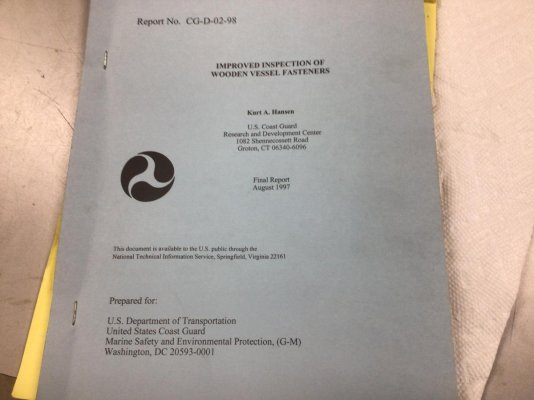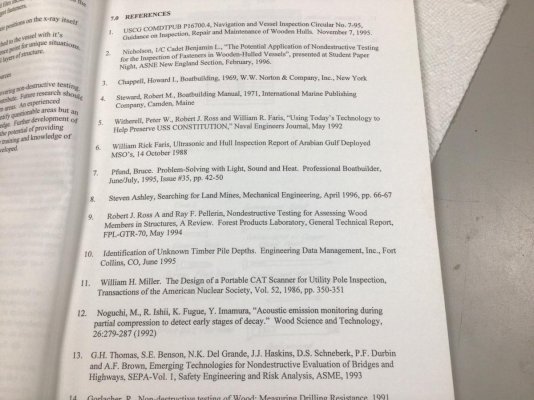I’m willing to forget the ‘ naked trapeze artist ‘ if you will
I’m living and working under my own name now in New England and I get a call to do a kind of multifaceted valuation and general fleet condition report for Stonewall Insurance a large Atlanta broker and their bank. There were four shrimpers three steel and one Desco built 70 something wood hull down at No Name shipyard in Bayou La Bartre, Alabama. The steel hulls were afloat but coming up one at a time for a wash and shave, zincs maybe stern bearings and prop swap. The Desco was side tracked on blocks and I could see five or six guys refastening her. They had sand swept the underbody mostly to reveal fastener locations and had two guys ahead sanding off remaining paint at the frames. Respirators were apparently optional.
Everybody was using pneumatic tools and they looked pretty organized. Next was a guy drilling and counter boring for new #20 galvy screws followed by a guy placing new screws in the hole and lighting tapping them to get them started straight. Finally we’re two big guys with heavy hammers and they were driving the screws home. One guy drove them flush then the next had a small spike maul to sink them. I couldn’t believe my eyes and stood their laughing to myself and shaking my head when the yard foreman comes up and says hi offers me a cigarette and I decline then says we’ll have her back in the water in two days. I’m thinking to myself I guess so if your hammering the screws in. Then he ask me where I’m from as in you dumb Yankee ! As if he were reading my mind makes a statement I’ll never forget. ‘ We always fasten these boats like this - screw drivers are for taking screws out ‘ I almost choked trying to suppress laughing.
Rick
I’m living and working under my own name now in New England and I get a call to do a kind of multifaceted valuation and general fleet condition report for Stonewall Insurance a large Atlanta broker and their bank. There were four shrimpers three steel and one Desco built 70 something wood hull down at No Name shipyard in Bayou La Bartre, Alabama. The steel hulls were afloat but coming up one at a time for a wash and shave, zincs maybe stern bearings and prop swap. The Desco was side tracked on blocks and I could see five or six guys refastening her. They had sand swept the underbody mostly to reveal fastener locations and had two guys ahead sanding off remaining paint at the frames. Respirators were apparently optional.
Everybody was using pneumatic tools and they looked pretty organized. Next was a guy drilling and counter boring for new #20 galvy screws followed by a guy placing new screws in the hole and lighting tapping them to get them started straight. Finally we’re two big guys with heavy hammers and they were driving the screws home. One guy drove them flush then the next had a small spike maul to sink them. I couldn’t believe my eyes and stood their laughing to myself and shaking my head when the yard foreman comes up and says hi offers me a cigarette and I decline then says we’ll have her back in the water in two days. I’m thinking to myself I guess so if your hammering the screws in. Then he ask me where I’m from as in you dumb Yankee ! As if he were reading my mind makes a statement I’ll never forget. ‘ We always fasten these boats like this - screw drivers are for taking screws out ‘ I almost choked trying to suppress laughing.
Rick



